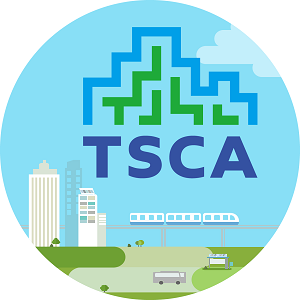【轉載】Smart City: Development of Multi-Dimensional (3D, 4D, nD) Tools and Applications to Inform Urban Spatial Planning (RDF17/ABE/THOMPSON)

Smart City: Development of Multi-Dimensional (3D, 4D, nD) Tools and Applications to Inform Urban Spatial Planning (RDF17/ABE/THOMPSON)
About This PhD Project
Project Description
Ground beneath the cities requires a greater understanding where an integrated approach is essential that needs to consider both above ground and subsurface ground conditions. This research project not only will look into the above surface constrains but also to the subsurface implications for urban spatial planning. Bricker et al. (2015) highlights that at the heart of this approach lays a city-scale ‘model’: a solid evidence base model, with the capabilities of data collection, archiving and accessing and sharing data, on which truly informed decisions can be made. By combining 3D city model data with the subsurface city data better planning solutions will be enabled which help de-risk investment in development and help increase land efficiency.
The aim of this PhD will be to align the digital web tools, 3D city modelling and subsurface modelling technologies to develop the city information models (CIM) that move beyond visualisation and above surface modelling and to the integrated information systems that can be used for urban spatial planning applications for example: brownfield redevelopment, emergency response, strategic resource planning, subway security, etc. This PhD project is also supported by the British Geological Survey (BGS). BGS’s knowledge and expertise on the use of urban underground space, applications of urban geoscience data for cities and subsurface modelling and visualisation technologies is an invaluable support when this is combined with the Northumbria University’s knowledge and expertise on 3D City Modelling, BIM and CIM.
This PhD is also timely; there are a number of research and innovation initiatives ongoing which provide greater focus on management of underground space e.g. the UK Collaboratorium for Research in Infrastructure and Cities; Ordnance Survey’s Geovation Challenge: Underground Assets. However, the digital framework for integrated data modelling and visualisation systems that allow interoperability between above and below ground data is in its infancy.
Virtual NewcastleGateshead: https://www.northumbria.ac.uk/about-us/academic-departments/architecture-and-built-environment/research/virtual-reality-visualisation/research-enterprise-projects/virtual-newcastle-gateshead/
BIM Academy: https://collab.northumbria.ac.uk/bim2/
British Geological Survey: https://www.bgs.ac.uk/
Eligibility and How to Apply
Please note eligibility requirement:
• Academic excellence of the proposed student i.e. 2:1 (or equivalent GPA from non-UK universities [preference for 1st class honours]); or a Masters (preference for Merit or above); or APEL evidence of substantial practitioner achievement.
• Appropriate IELTS score, if required.
For further details of how to apply, entry requirements and the application form, see
https://www.northumbria.ac.uk/research/postgraduate-research-degrees/how-to-apply/
Please ensure you quote the advert reference above on your application form.
Deadline for applications: 20 January 2017
Start Date: 2 October 2017
Northumbria University is an equal opportunities provider and in welcoming applications for studentships from all sectors of the community we strongly encourage applications from women and under-represented groups.
Funding Notes
This project is being considered for studentship funding in competition with other projects, available to applicants worldwide. The studentship includes a full stipend, paid for three years at RCUK rates for 2017/18 (this is yet to be set, in 2016/17 this is £14,296 pa) and fees (Home/EU £4,350 / International £13,000 / International Lab-based £16,000). Additionally, as Northumbria celebrates its 25th anniversary as a University and in line with our international outlook, some projects may also be offered to students from outside of the EU supported by a half-fee reduction.
References
Thompson Emine Mine (2016), What makes a city “Smart”, IJAC (International Journal of Architectural Computing) Special Issue December 2016.
Thompson, Emine Mine, Greenhalgh, Paul, Muldoon-Smith, Kevin, Charlton, James and Dolnik, Michael (2016) Planners in the Future City: Using City Information Modelling to Support Planners as Market Actors. Urban Planning, 1 (1). pp. 79-94. ISSN 2183-7635.
Thompson, Emine Mine, (2016), Smart City: Adding to the complexity of cities – A critical reflection, in Complexity & Simplicity 34th eCAADe Conference Proceedings, 22-26th August, Oulu, Finland.
Bricker, S Reeves H., Campbell S.D.G., Price S., 2015, The Ground Beneath Cities: Where Should Future Development Occur? Thought Piece By British Geological Survey. Government Office for Science, Web. 25 Jan. 2016. Future of Cities (https://www.gov.uk/government/uploads/system/uploads/attachment_data/file/461763/future-cities-optimising-subsurface-use.pdf)
Thompson, Emine Mine (2015) City “is” Real-time. In: Real Time – Proceedings of the 33rd eCAADe Conference – Volume 1. Vienna University of Technology, Vienna, Austria, pp. 501-510.
Charlton, James, Giddings, Bob, Thompson, Emine Mine and Peverett, Iwan (2015) Understanding the interoperability of virtual city models in assessing the performance of city centre squares. Environment and Planning A, 47 (6). pp. 1298-1312. ISSN 0308-518X.
Greenhalgh, Paul and Thompson, Emine Mine (2014) Shaping future cities. RICS Land Journal. pp. 14-16. ISSN 1754-9094.
Horne, Margaret, Thompson, Emine Mine and Charlton, James (2014) Towards a multifunctional virtual city model. In: Technologies for Urban and Spatial Planning: Virtual Cities and Territories. Advances in Civil and Industrial Engineering (ACIE), IGI Global Book, Hershey, PA, pp. 154-142. ISBN 9781466643499.
Mansour, M., Mackay, J., Abesser, C., Williams, A., Wang, L., Bricker, S. and Jackson, C., 2013. Integrated Environmental Modeling applied at the basin scale: linking different types of models using the OpenMI standard to improve simulation of groundwater processes in the Thames Basin, UK.
Royse, K., Bricker, S., Banks, V., Lee, K. and Hopson, P., 2012. The use of 3D modelling and GIS technologies in understanding and predicting anomalous ground conditions in London.

